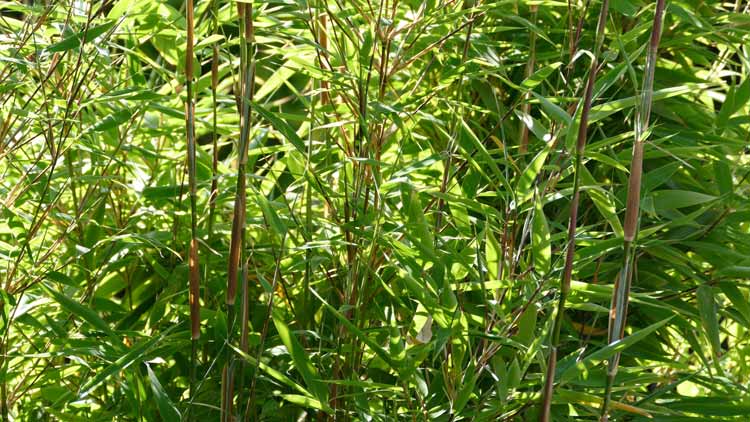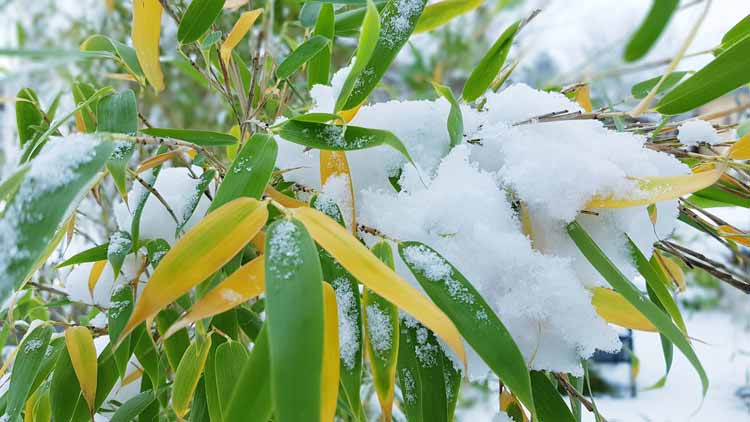In recent years, bamboo’s appeal has soared due to its numerous aesthetic and useful applications. Numerous countries rely on bamboo as a source of income because of its rapid growth and versatility. Western countries (especially Australia) have misinterpreted and even demonized bamboo because of the huge number of species available.
How Often Should You Water Bamboo?
Bamboo grown outdoors usually had different wagering requirements compared to bamboo grown in pots. The latter is planted in soil that’s not very efficient in retaining moisture. That means you have to water it about 3 or 4 times a week during the warmer summer months.
How to Tell if Bamboo Needs Water?
Generally speaking, mature bamboo will require watering two or three times a week, more frequently if the weather is very hot or windy. Bamboo requires at least one watering per week during “average” weather conditions.
Check for evidence of brown leaf tips or curled leaves before watering your bamboo, and make sure the soil is completely dry for at least two to three inches before saturating the area surrounding your bamboo with water.
How Do You Know When Your Bamboo is Sufficiently Watered?
For bamboo plants to thrive, they must receive at least one inch of water every week. The water may come from rainfall or manual irrigation.
It is critical to thoroughly water bamboo because this will aid in the development of deep roots and the protection of your bamboo against drought.
Allowing your bamboo leaves to fall and settle around the roots because it helps increase mulch while keeping soil moist, both of which are beneficial. In addition, when they degrade and foster growth, they come back to the soil as critical nutrients that will benefit future growth.
Can You Overwater Bamboo?
Bamboo plants develop best when they receive appropriate water, but it is critical to avoid overwatering. If your soil is always saturated with water, it will be detrimental to your plants since it will prevent the roots from getting enough oxygen.
Although overwatering can cause problems, if the soil drains well and is adequately aerated, it will not. Therefore, if you have well-draining soil, you won’t have to worry about it retaining too much moisture.
This is where the type of soil you have would be important to consider. Because clay soil retains a great deal of water, overwatering would undoubtedly be an issue in this situation.
What are Signs of an Overwatered Bamboo?
The easiest way to tell if your bamboo has been overwatered is to take a good look at its leaves. If the tips and edges of the leaves are turning brown, that’s a sign that your bamboo is being overwatered, at which point you want to stop watering it for a while. When the leaves curl up and look like normal again, you can resume watering.
How Long Can a Bamboo Go Without Water?
For the most part, bamboo can survive up to 10 days without water. Of course, this depends on a series of factors, mostly relying on the climate conditions where it’s planted. Note that some bamboo species are more drought-tolerant than others.
Should Bamboo Soil Be Moist?
Bamboo prefers moist soil but you have to be careful not to overwater it. Bamboo grows best on well-drained soil, which is often found in tropical climates. The compacted and thick clay soils that surround bamboo rhizomes and roots might prevent water from flowing away from the plants.
Why is Bamboo Turning Brown/Yellow?
If your bamboo’s leaves are changing color, it could be a sign of different things. It could be that the plant is overwatered, the soil is boggy, or it lacks the nutrients that bamboo needs to thrive.
Why is my Bamboo Droopy?
As a general rule, if your bamboo’s leaves are curling laterally (as opposed to longitudinally), this indicates that the plant is stressed and is not receiving enough water. The presence of drooping leaves indicates that your bamboo is either overwatered or soil drainage is pretty poor.
Does Bamboo Need Fertilizer?
It is possible to purchase fertilizer products that are “specially prepared” for bamboo The expense of using these is typically higher. Early spring (before new shoots develop) and late winter (before new shoots emerge) are the best times to apply fertilizer, followed by a second application in early summer.
How Much Sunlight Does Bamboo Need?
The majority of bamboo cultivars require at least six hours of direct sunlight per day. While certain types are more tolerant of shade than others, the general rule is that the more sunlight you can provide, the happier the plant will be. The best location is in a greenhouse, where the plant gets plenty of sunlight and humidity.
Will Temperatures and Humidity Affect Bamboo?
Warm temperate and tropical regions provide the best growing conditions for the majority of bamboo species. The plant grows exceptionally quickly, and under these conditions, you can see it grow up to 3 inches per day.
There’s a variety of purposes including medicine, construction, and food. In residential landscapes, it is most commonly utilized to mark boundaries or as a decorative landscape feature, depending on the situation.
The correct species of bamboo can be grown in harsh environments such as mountain or desert climates if the right growing conditions are provided.
As for humidity, the optimal levels variate between 60 and 80 percent. Note that when the humidity levels exceed 80 percent, bamboo will not grow as strong.
Will Bamboo Survive in the Winter?
Winterizing bamboo, particularly at its younger stages, is critical to ensuring that it can continue to grow in the following spring. It is not recommended that bamboo be left to freeze. Maintaining this plant’s health as much as possible throughout the winter will increase the likelihood of seeing significant growth the following spring.
Bamboo plants grown in containers require greater protection than bamboo plants grown in the ground. Because rhizomes in above-ground containers are not shielded by the soil around them, heat is beneficial to their growth.
You can insulate the container or bury it in the ground to keep it warm throughout the winter months. During the colder months, if at all feasible, relocate the container to a more protective location.
Will Bamboo Survive in Direct Sunlight?
Bamboos can be seen growing in a variety of climates in their native environment. Some plants do well in direct sunlight, while others do well in partial shade. Even though certain bamboo can survive both shade and sunlight, you want to choose a bamboo that will grow the best in your growing conditions.
Can You Grow Bamboo in Just Water?
Bamboo doesn’t need a lot of water to exist, although it can be cultivated in water if the conditions are right. If you want to grow your bamboo in water, ensure that the roots are continually kept moist by adding more water as needed.
Freshwater should be given to your lucky bamboo every 7 to 10 days to ensure that it remains healthy and thriving.
Final Thoughts
Bamboo loves water and proper drainage. The exact amount of water and the frequency of watering depends on the exact species of bamboo in question, as well as the different weather and climate conditions in the area.
Read our related articles:
- How Often Should You Water Pumpkins?
- How Often Should You Water Citronella?
- How Often Should You Water Peperomia Plants?
- How Often Should You Water a Dogwood Tree?
- How Often Should You Water Camellias?
- How Often Should You Water Snake Plants?
- How Often Should You Water Mums?

Janice is a retired High School teacher who is spending her leisure years keeping busy with all sorts of projects. Aside from freelance writing, she’s an enthusiastic amateur chef, home wine maker, and tends a large raised-bed vegetable garden, while at the same time running a Bed & Breakfast.




